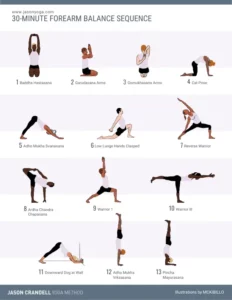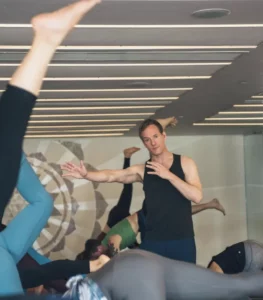Nearly six years ago, my daughter Sofia-Rose was born. She brought me happiness I could have never imagined. She also obliterated my home practice beyond all recognition for more than a year.
Before she was born, I was so hopped-up on adrenaline, oxytocin, and optimism (not always my strength) that I didn’t think her birth would change my practice. In fact, I was delusional enough to think that her birth would inspire even greater dedication to my practice. I thought her presence would be my shot at a complete renewal, a total overhaul in which nothing could get between my mat and me.
Yes, I love her to the point that it makes me tremble. Yes, parenting has taught me more about patience, breath, and love than the rest of my life combined. No, I wouldn’t trade her for the world. But did my practice stay the same? H@#l no! Not even close. My asana practice crumbled to a shell of its former self and I grew a Dad-bod like you wouldn’t believe. Even more to the point of this post, my teaching temporarily suffered with these changes. Now, it’s better than ever since I have more life experience to draw on (and I’ll share some of the yoga teaching tips I learned below). But, I didn’t see this at the time.
Everyone goes through different chapters in life. Everyone faces curveballs. And, like a good curveball, you usually don’t see them coming. Being a yoga practitioner and yoga teacher doesn’t inoculate you from life. It just provides you with insight and skills that help you manage the complexity of the human condition.
Since we all face unforeseen circumstances from time to time that affect our practice and teaching, it’s important to know how to stay honest and authentic in your teaching when your life gets (even more) complicated.
Here are some practical yoga teaching tips to work with:
1. Don’t Press Too Hard
When baseball players are in a slump, they sometimes perpetuate it further by pressing—or, becoming overly eager to make something happen. This undermines their ability to relax and respond to the game in a skillful way. I’ve noticed the same thing in myself at times. When my teaching becomes stale, I often overcompensate by trying too hard. I get too wordy, too complicated, and too hurried. If you’re going through a challenging phase in your teaching, try this tip instead: Step back slightly and let the practice shine. Minimize the impulse to overdo and trust that the practice itself will be enough for your students.
See also 5 Ways to (Re)Inspire Your Yoga Practice
2. Be Transparent Without Being Overly-Indulgent
Never make class about you and what you’re going through. After all, the students are paying you—you’re not paying them for group therapy. At the same time, it’s nice to be relatively transparent and to acknowledge what’s happening in your life (at least in limited doses). Students appreciate the reminder that you’re a real, flesh and blood person—and, that yoga is a practical, accessible practice for everyone (at all times). It’s likely that many of your students have experienced what you’re currently going through and this may help them connect to your teaching even more deeply.
3. Don’t Radically Change Your Class or Teaching Style
It’s important to be consistent with your students. When teachers go through a significant transition in their lives, they sometimes make abrupt stylistic changes to their teaching. While it’s important to be relatively transparent, it’s also essential to provide a consistent experience for your students. If you’re a teaching a vinyasa class, don’t randomly teach a Yin or restorative class because you’re tired or overwhelmed. Sure, you can play with the pace, but be responsive to your students and provide them with the class that they came for.





